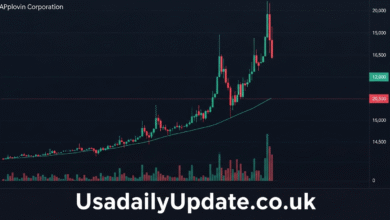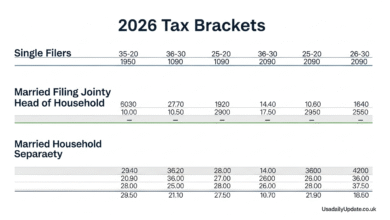USD to NPR: Essential Guide for Smart Currency Exchange
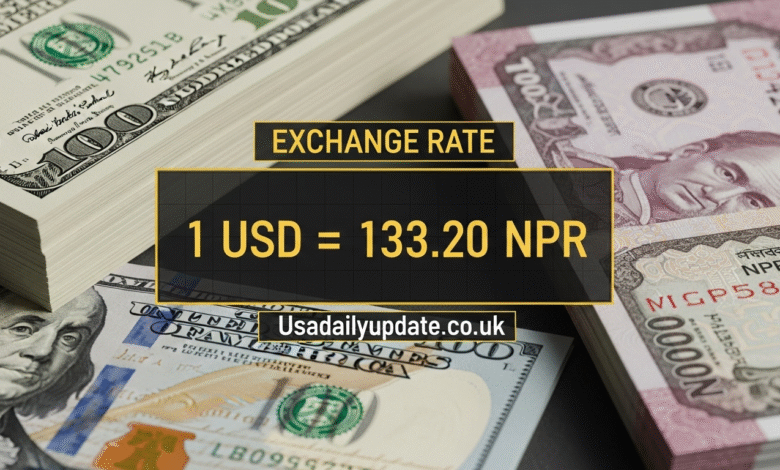
Introduction
Planning a trip to Nepal or sending money to family and friends there? Understanding the USD to NPR exchange rate can save you significant money and headaches. The Nepali rupee fluctuates against the US dollar, and knowing when and how to exchange your currency makes a real difference in your pocket.
Whether you’re a tourist heading to the Himalayas, a business professional, or someone supporting loved ones in Nepal, you need current information about USD to NPR conversions. The exchange rate impacts everything from your travel budget to remittance costs. Getting the best rate isn’t just about numbers on a screen. It’s about understanding the market and choosing the right exchange method.
In this comprehensive guide, I’ll walk you through everything you need to know about converting USD to NPR. We’ll cover current exchange rates, factors affecting currency values, where to exchange money, and tips for getting the best deals. By the end, you’ll be equipped to make informed decisions about your currency exchanges.
Understanding the USD to NPR Exchange Rate
The USD to NPR exchange rate represents how many Nepali rupees you get for one US dollar. This rate changes constantly based on market conditions, economic factors, and global events. Understanding what drives these changes helps you time your exchanges better.
As of 2025, the exchange rate typically hovers around 130 to 135 Nepali rupees per US dollar. However, this rate fluctuates daily based on supply and demand in the foreign exchange market. The actual rate you receive depends on where and how you exchange your money.
Nepal operates a managed float exchange rate system. The Nepal Rastra Bank, the country’s central bank, influences the rate to maintain stability. They peg the Nepali rupee to the Indian rupee at a fixed rate, which indirectly affects the USD to NPR rate through the USD to INR relationship.
Banks, money changers, and online platforms all offer different rates. The difference between buying and selling rates is called the spread, and this is where exchange services make their profit. Understanding these variations helps you shop around for better deals.
How Exchange Rates Are Determined
Multiple factors influence the USD to NPR exchange rate at any given time. Economic indicators in both countries play significant roles. When the US economy strengthens, the dollar typically appreciates against other currencies including the Nepali rupee.
Interest rate differentials matter considerably. If US interest rates rise relative to Nepal’s rates, investors might prefer holding dollars, increasing demand and strengthening the dollar against the rupee. Central bank policies in both nations directly impact currency values.
Trade balances between the countries affect exchange rates too. Nepal imports more from the US than it exports, creating demand for dollars. This trade imbalance puts downward pressure on the rupee relative to the dollar.
Political stability and economic confidence also play roles. Investors prefer stable environments, so political uncertainty in either country can trigger currency movements. Natural disasters, policy changes, and global economic conditions all factor into daily rate fluctuations.
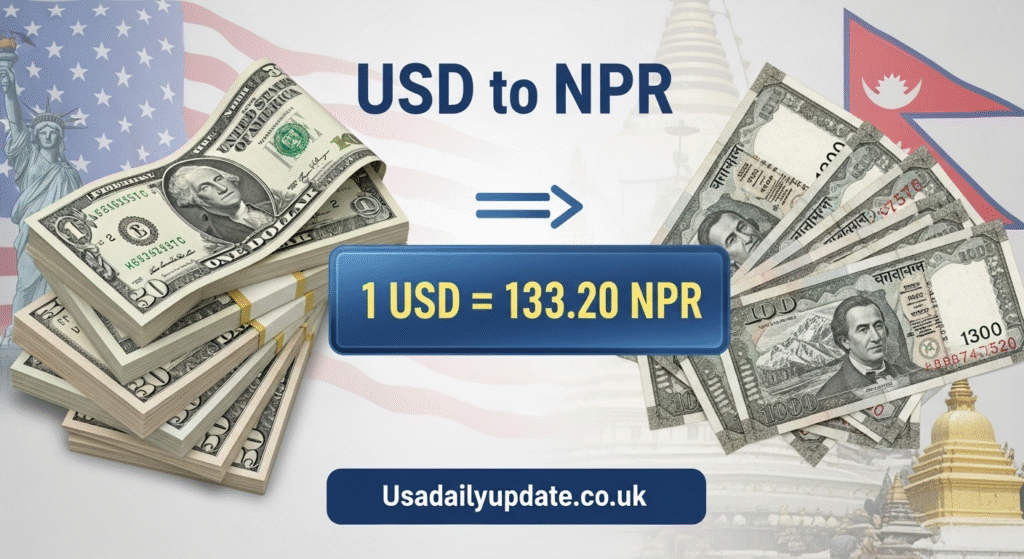
Current USD to NPR Conversion Rates
Getting accurate, up-to-date USD to NPR rates is crucial before any exchange. The interbank rate, which banks use when trading with each other, serves as the baseline. Consumer rates always differ from this benchmark, usually less favorably.
Commercial banks in Nepal typically offer rates about 2% to 4% below the interbank rate. Money changers might provide slightly better rates than banks but vary significantly in reliability and legitimacy. Online platforms and apps often display real-time rates, making comparison shopping easier.
When checking rates, distinguish between buying and selling prices. If you’re converting USD to NPR, you care about the bank’s buying price for dollars or their selling price for rupees. These terms can be confusing, so always confirm which rate applies to your transaction.
Airport exchanges consistently offer the worst rates due to convenience premiums and captive customers. Hotel exchanges aren’t much better. These options should be last resorts or used only for small amounts to cover immediate expenses.
Where to Find Reliable Rate Information
Several online resources provide current USD to NPR exchange rates. XE.com, OANDA, and Google Finance offer real-time data that tracks the interbank rate. These serve as references for what the actual market rate looks like.
The Nepal Rastra Bank website publishes official exchange rates daily. These rates apply to transactions with the central bank and serve as benchmarks for commercial rates. Checking this official source gives you baseline expectations.
Currency converter apps on smartphones provide convenient access to current rates. Apps like Wise (formerly TransferWise), Revolut, and XE Currency let you track rates and set alerts for favorable movements. Many update rates every few minutes during market hours.
Individual bank websites in Nepal display their foreign exchange rates. Nepal Bank Limited, Rastriya Banijya Bank, and Nabil Bank all publish their rates online. Comparing several banks helps you identify who offers the best terms for USD to NPR exchanges.
Best Ways to Exchange USD to NPR
Using Banks for Currency Exchange
Banks represent the most secure option for exchanging USD to NPR. Major Nepali banks handle foreign currency transactions and maintain dollar accounts. You’ll need identification and sometimes documentation of your currency’s source, especially for large amounts.
Commercial banks in Kathmandu and other major cities offer better rates than smaller branches in rural areas. Nabil Bank, Standard Chartered Nepal, and Himalayan Bank are known for competitive foreign exchange rates. Calling ahead to compare rates saves time and potentially money.
The process at banks can be time consuming. Expect paperwork and possible waiting periods, especially for larger transactions. However, the security and reliability often justify the inconvenience. You’ll receive official receipts, which matter if you need to convert back to dollars later.
Some Nepali banks offer preferential rates to account holders. If you’re spending extended time in Nepal, opening a local bank account might provide access to better exchange rates. This strategy makes sense for long-term visitors or regular travelers.
Money Changers and Exchange Services
Licensed money changers in Nepal often provide better rates than banks for USD to NPR conversions. These businesses specialize in currency exchange and operate with lower overhead than banks. Tourist areas in Kathmandu, particularly Thamel, have numerous exchange offices.
Always verify that money changers are licensed by checking for authorization certificates displayed prominently. Unlicensed operators might offer tempting rates but risk fraud or counterfeit currency. The slight rate advantage isn’t worth the risk of scams.
Negotiate when exchanging larger amounts. Money changers sometimes offer better rates for substantial transactions, especially during slower business periods. Don’t be afraid to ask if they can improve their initial quote.
Count your money carefully before leaving the exchange counter. Verify the amount matches what you expected based on the agreed rate. Mistakes happen, and some unscrupulous operators use quick-counting tricks to short-change customers. Taking your time protects your interests.
Online Money Transfer Services
Digital platforms like Wise, Remitly, and WorldRemit offer USD to NPR transfers at competitive rates. These services typically beat traditional banks significantly on both exchange rates and fees. The convenience of transferring from your phone or computer adds appeal.
Online services show you the exact rate and all fees upfront. This transparency helps you compare options accurately. What you see is what you get, unlike some traditional methods where hidden fees surprise you later.
Transfer speeds vary by service and method. Some platforms complete transfers within minutes, while others take several business days. Urgent transfers usually cost more, so planning ahead saves money. The recipient needs a Nepali bank account or mobile wallet to receive funds.
Security is generally excellent with established online services. They use bank-level encryption and are regulated in their operating jurisdictions. Reading reviews and verifying legitimacy before using any platform protects you from fraudulent services.
ATM Withdrawals in Nepal
Using ATMs in Nepal to withdraw rupees directly from your US bank account offers convenience. Your bank converts the amount automatically at their exchange rate. This method works well for smaller amounts and immediate cash needs.
However, ATM withdrawals often involve multiple fees. Your US bank might charge international withdrawal fees, the ATM operator adds their fee, and the exchange rate includes a markup. These costs add up quickly, making ATMs expensive for large amounts.
Daily withdrawal limits restrict how much you can get at once. Most Nepali ATMs limit withdrawals to 35,000 to 50,000 rupees per transaction. If you need more cash, you’ll make multiple withdrawals, incurring fees each time.
Some US banks reimburse international ATM fees or offer favorable foreign exchange terms. Cards from Charles Schwab, Fidelity, and some credit unions provide these benefits. If you travel internationally often, consider getting a travel-friendly bank account.
Factors Affecting USD to NPR Exchange Rates
Economic Indicators and Trends
GDP growth rates in both countries influence currency strength. Strong US economic growth typically strengthens the dollar against the Nepali rupee. Conversely, robust Nepali economic performance can help the rupee hold value better.
Inflation differentials matter significantly. If Nepal experiences higher inflation than the US, the rupee’s purchasing power declines, often leading to depreciation against the dollar. Monitoring inflation trends helps predict currency movements.
Employment data and consumer confidence in the US affect dollar strength. Positive employment reports usually boost the dollar, potentially making USD to NPR conversions less favorable for those needing rupees. Understanding these connections helps time exchanges.
Nepal’s reliance on remittances impacts the rupee’s value. Money sent home by Nepalis working abroad represents a major portion of foreign currency inflows. Changes in remittance patterns affect supply and demand for foreign currencies including dollars.
Political and Policy Changes
Central bank decisions directly impact exchange rates. When the Federal Reserve adjusts US interest rates, ripple effects spread through global currency markets. The Nepal Rastra Bank’s responses to these changes affect the USD to NPR rate.
Political stability matters for currency confidence. Elections, government changes, or policy shifts in either country can trigger currency volatility. During uncertain periods, investors often flock to the dollar as a safe haven, strengthening it against currencies like the rupee.
Trade policies and agreements between nations affect currency demand. New trade deals or tariffs can shift economic relationships, influencing exchange rates. While US-Nepal direct trade is limited, India’s role as an intermediary adds complexity.
Regulatory changes in Nepal’s financial sector impact how easily currency flows in and out. Capital controls, if implemented, can affect exchange rates by restricting supply or demand. Staying informed about policy changes helps anticipate rate movements.
Global Economic Conditions
World events affect currency markets broadly. Global recessions typically strengthen the US dollar as investors seek safety. This trend can make USD to NPR conversions more favorable for those converting dollars to rupees.
Oil prices impact Nepal’s economy significantly since the country imports petroleum products. Rising oil prices increase Nepal’s import bills, creating more demand for foreign currency and potentially weakening the rupee against the dollar.
Regional economic conditions, particularly India’s economy, heavily influence Nepal’s currency. The fixed exchange rate between the Nepali rupee and Indian rupee means changes in INR value relative to USD directly affect the USD to NPR rate.
Natural disasters or major events in Nepal can impact currency values. Earthquakes, floods, or other crises might affect economic activity and currency stability. The 2015 earthquake, for example, had significant economic and currency implications.
Tips for Getting the Best USD to NPR Rate
Timing Your Currency Exchange
Exchange rates fluctuate throughout the day and week. Monitoring rates over time helps you identify favorable moments for larger exchanges. Setting up rate alerts through currency apps notifies you when rates reach your target levels.
Avoid exchanging money during crisis periods or major global events. Currency volatility increases during these times, often working against you. Patience usually pays off if you can wait for markets to stabilize.
The beginning and end of the month sometimes see rate patterns due to payment cycles. Remittance flows increase when workers send money home, potentially affecting rates. Observing these patterns might reveal optimal timing windows.
Weekend exchanges might carry less favorable rates since markets are closed and liquidity is lower. If possible, conduct exchanges during weekday business hours when markets are active and competitive.
Avoiding Common Exchange Mistakes
Never exchange money at airports unless absolutely necessary. The convenience premium can cost you 10% or more compared to rates elsewhere. Exchange just enough to cover transportation to the city, then use better options.
Don’t fall for “zero commission” advertising. These services simply build fees into poor exchange rates. Always calculate the total cost including both fees and the rate difference from the interbank rate.
Avoid exchanging all your money at once unless rates are exceptionally favorable. Spreading exchanges over time diversifies your rate risk. You might catch better rates on subsequent exchanges.
Watch out for dynamic currency conversion at ATMs or when using credit cards. When offered the choice to be charged in dollars versus local currency, always choose local currency. Dynamic conversion uses terrible rates that significantly increase costs.
Maximizing Your Money’s Value
Compare multiple sources before exchanging significant amounts. The difference between the best and worst rates can be substantial. A few phone calls or website visits can save hundreds of dollars on larger exchanges.
Consider using a combination of methods. Perhaps exchange some money before traveling, withdraw some from ATMs for convenience, and use cards for major purchases. Diversifying methods balances cost and convenience.
Build relationships with exchange services if you’re a regular customer. Some providers offer better rates to repeat clients. This approach works particularly well with local money changers who remember loyal customers.
Keep exchange receipts for potential reconversion. If you need to exchange rupees back to dollars when leaving Nepal, official receipts from your original exchange help. Without them, reconversion becomes more difficult and potentially more expensive.
USD to NPR for Different Purposes
Tourism and Travel Expenses
Budget travelers to Nepal typically need about $30 to $50 daily for basic expenses. At current USD to NPR rates, that’s approximately 4,000 to 6,500 rupees per day. This covers budget accommodation, local food, and basic transportation.
Mid-range travelers should budget $75 to $150 daily. This allows for nicer hotels, varied dining options, and guided activities. Luxury travelers can easily spend $200 or more daily depending on their preferences and activities.
Trekking expenses vary widely based on route and services. Independent trekkers might spend $25 to $40 daily, while organized treks with guides and porters cost $50 to $100 or more per day. Currency needs depend heavily on your trekking style.
Many tourist services in Nepal accept dollars directly, though the exchange rates they use are usually poor. Paying in rupees almost always provides better value. Plan to have enough local currency for your needs.
Business and Commercial Transactions
Businesses dealing with USD to NPR exchanges face unique considerations. Larger transaction volumes mean even small rate differences significantly impact profitability. Establishing relationships with banks offering corporate rates makes sense.
Hedging strategies can protect businesses from exchange rate volatility. Forward contracts lock in rates for future transactions, providing certainty for budgeting. While these instruments cost money, they eliminate uncertainty about future costs or revenues.
Timing payments strategically around favorable exchange rates improves margins. If your business allows flexibility in payment timing, monitoring rates and acting when favorable can boost profitability over time.
Working with foreign exchange specialists rather than standard banks often yields better rates for businesses. These firms focus specifically on currency transactions and can offer more competitive terms than general banking services.
Remittances and Money Transfers
Sending money to Nepal represents the largest use case for USD to NPR conversions. Nepalis working abroad sent home over $8 billion in remittances in recent years, making this a vital part of Nepal’s economy.
Remittance-focused services like Remitly, Xoom, and WorldRemit typically offer better rates than traditional banks for money transfers. These platforms optimize for this specific use case, passing savings to customers through better rates and lower fees.
Regular senders should compare services periodically. Competition in the remittance space means rates and fees change. What was the best option six months ago might not be optimal today. Quarterly reviews help ensure you’re getting good value.
Consider the recipient’s receiving options when choosing services. Some platforms deliver cash for pickup, others deposit to bank accounts, and some offer mobile wallet transfers. The recipient’s preferences and access affect which service works best.
Legal and Regulatory Considerations
Foreign Exchange Regulations in Nepal
Nepal maintains foreign exchange controls managed by the Nepal Rastra Bank. There are limits on how much foreign currency individuals can hold or exchange. Tourists can generally exchange amounts needed for their stay without issues.
Bringing more than $5,000 USD into Nepal requires declaration at customs. Failing to declare can result in confiscation. When leaving, you can take out up to the amount you declared bringing in, with proper documentation.
Exchanging money through authorized channels is legally required. Unlicensed money changers operate illegally, and using them can cause legal problems. Stick with licensed banks and authorized exchange services to avoid issues.
Nepali rupees are not freely convertible internationally. Converting rupees back to dollars when leaving Nepal requires showing exchange receipts from your original conversions. Keep all receipts throughout your stay.
Tax Implications
Large currency exchanges might have tax reporting requirements in the US. The IRS requires reporting of foreign bank accounts exceeding $10,000 through FBAR forms. While simple exchanges don’t trigger this, maintaining accounts abroad might.
Businesses must properly account for foreign exchange gains or losses. Currency fluctuations between when obligations are incurred and paid can create taxable gains or deductible losses. Proper accounting ensures compliance and optimizes tax treatment.
Remittance senders generally don’t face tax issues for transfers to family. However, large gifts might have gift tax implications under US law. Consulting a tax professional about significant transfers provides clarity.
Money changers and financial institutions report large transactions to authorities. This anti-money laundering measure applies globally. Legitimate transactions shouldn’t cause concerns, but be prepared to document the source and purpose of large exchanges.
Technology and USD to NPR Exchange
Mobile Apps and Digital Tools
Currency converter apps make checking USD to NPR rates effortless. Apps like XE Currency, Currency Converter Plus, and OANDA offer offline functionality, perfect for travelers without constant internet access. Download rates before heading to remote areas.
Some apps let you track multiple currencies simultaneously. If you’re traveling to several countries or dealing with various currencies, this feature simplifies monitoring. Historical charts help you understand whether current rates are favorable.
Rate alert features notify you when the USD to NPR rate reaches your target level. Set your desired rate and the app messages you when it’s achieved. This automation helps you catch favorable rates without constant checking.
Many apps integrate with money transfer services. You can check rates and initiate transfers within the same application. This convenience streamlines the process of converting and sending money.
Online Platforms and Fintech Solutions
Digital banking solutions like Wise, Revolut, and PayPal offer multi-currency accounts. These hold dollars, rupees, and other currencies, letting you convert when rates are favorable. The flexibility helps optimize exchange timing.
Blockchain-based solutions and cryptocurrency intermediaries present alternative exchange methods. Some people convert USD to cryptocurrency, transfer it, then convert to NPR. This process can bypass traditional banking but involves additional volatility and complexity.
Peer-to-peer currency exchange platforms connect people wanting opposite exchanges. Someone in Nepal needing dollars might exchange directly with someone in the US needing rupees. Rates can be better, though these platforms carry their own risks.
Automated rate monitoring and conversion tools help serious traders or businesses. These systems execute exchanges when predetermined conditions are met. Such automation optimizes rates but requires technical setup and understanding.
The Future of USD to NPR Exchange
Economic Projections and Trends
Economic forecasts suggest continued gradual depreciation of the rupee against the dollar over coming years. Nepal’s higher inflation relative to the US typically drives this trend. However, strong remittance flows help stabilize the currency.
Nepal’s infrastructure development and potential growth in tourism and hydropower could strengthen the economy. A stronger economy generally supports currency value. Watching these sectors provides clues about future exchange rate directions.
India’s economic trajectory heavily influences Nepal’s currency future. As Nepal’s largest trading partner with a fixed INR to NPR rate, India’s economic strength or weakness directly affects the USD to NPR rate through the USD to INR channel.
Global digital currency adoption might change exchange mechanisms. If digital currencies gain mainstream acceptance, traditional exchange processes could evolve significantly. Nepal’s approach to digital financial innovation will influence how exchanges work in the future.
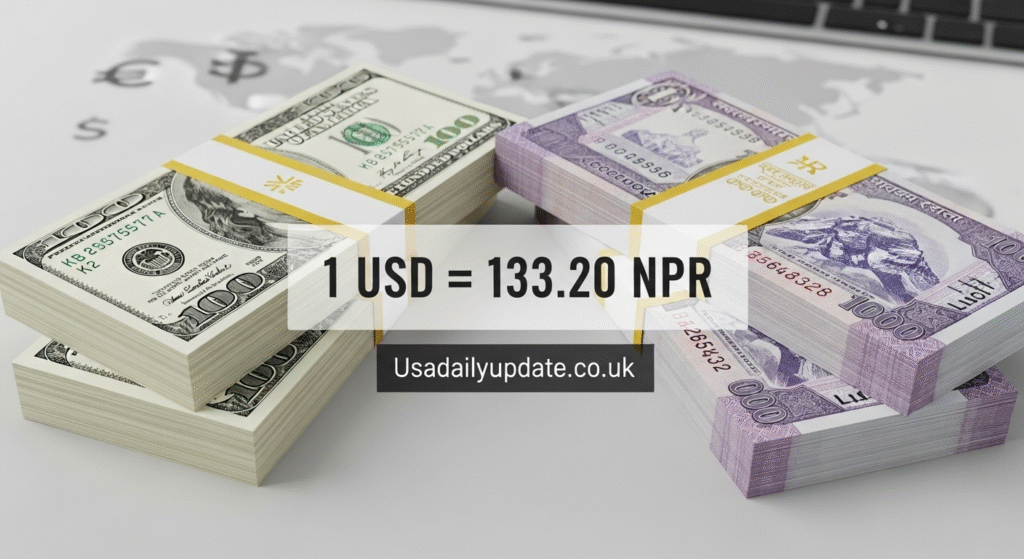
Technological Developments
Blockchain technology promises cheaper, faster international transfers. As this technology matures, USD to NPR conversion costs should decrease. Lower fees and better rates benefit everyone who exchanges between these currencies.
Artificial intelligence might optimize exchange timing for individuals. Apps could learn your needs and automatically suggest or execute exchanges at optimal moments. This automation could help average users get rates previously available only to professional traders.
Mobile payment integration between countries could simplify cross-border commerce. If US and Nepali digital payment systems integrate seamlessly, automatic currency conversion at favorable rates might happen transparently during purchases.
Regulatory technology might streamline compliance while maintaining security. Faster identity verification and fraud detection could speed up exchange processes without sacrificing safety. Better technology usually means better customer experiences.
Conclusion
Understanding USD to NPR exchange rates empowers you to make smarter financial decisions. Whether you’re traveling to Nepal, sending money to loved ones, or conducting business, getting favorable exchange rates directly impacts your bottom line. The rate difference between the best and worst options can be substantial.
Knowledge about what drives exchange rates, where to find the best deals, and how to avoid common mistakes puts money back in your pocket. Combining this knowledge with helpful technology makes optimizing your exchanges easier than ever. Take time to compare options and plan your currency needs strategically.
The USD to NPR exchange landscape continues evolving with new technologies and services. Staying informed about options and rates ensures you’re always getting good value. Small efforts in comparing rates and timing exchanges can save significant amounts over time.
What’s your experience with converting USD to NPR? Have you found services or strategies that work particularly well? Sharing knowledge helps everyone make better financial decisions.
Frequently Asked Questions
What is the current USD to NPR exchange rate?
The USD to NPR exchange rate typically ranges between 130 to 135 Nepali rupees per US dollar as of 2025. However, rates fluctuate daily based on market conditions. Check reliable sources like XE.com, Nepal Rastra Bank, or your bank for current rates before exchanging.
Where can I get the best USD to NPR exchange rate?
Online money transfer services like Wise, Remitly, and WorldRemit typically offer the best rates for USD to NPR conversions. Licensed money changers in Nepal also provide competitive rates. Banks are secure but usually offer less favorable rates compared to specialized services.
Can I use US dollars in Nepal?
Some tourist-focused businesses in Nepal accept US dollars directly, but you’ll get poor exchange rates this way. Converting to Nepali rupees before spending provides much better value. ATMs throughout Nepal allow you to withdraw rupees using US debit or credit cards.
How much USD should I exchange for a trip to Nepal?
Budget travelers need about $30 to $50 daily, mid-range travelers $75 to $150, and luxury travelers $200 or more. For a two-week trip, consider exchanging $500 to $1,500 depending on your travel style. You can always exchange more once in Nepal if needed.
Are there limits on exchanging USD to NPR in Nepal?
Tourists can exchange amounts needed for their stay without limits through authorized channels. However, bringing more than $5,000 USD into Nepal requires customs declaration. Always use licensed banks or money changers rather than unauthorized services to avoid legal issues.
How long do USD to NPR online transfers take?
Transfer speeds vary by service and method. Some platforms like Wise or Remitly complete transfers within minutes to hours, while traditional bank transfers might take two to five business days. Express options usually cost more than standard transfers.
Is it better to exchange USD to NPR before or after arriving in Nepal?
Exchange a small amount before arriving for immediate expenses like transportation. Then use banks or money changers in Nepal for better rates on larger amounts. Avoid airport exchanges except for small amounts needed right away.
What fees are involved in USD to NPR conversion?
Fees vary by method. Banks typically charge $15 to $40 per transaction plus rate markups. Online services might charge $0 to $10 with transparent rate markups. ATM withdrawals incur both your bank’s international fee and the ATM operator’s fee, usually totaling $5 to $10 per transaction.
Can I convert NPR back to USD when leaving Nepal?
Yes, but you’ll need original exchange receipts showing you converted USD to NPR through authorized channels. Without receipts, reconversion is difficult or impossible. Exchange only what you need to avoid this issue, or plan to use leftover rupees on future visits.
Why does the USD to NPR rate change daily?
Exchange rates fluctuate based on supply and demand in currency markets. Economic indicators, interest rates, political events, trade balances, and global conditions all influence daily movements. The Nepal Rastra Bank also manages the rate to maintain stability relative to the Indian rupee.
Also Read Usadailyupdate.co.uk

